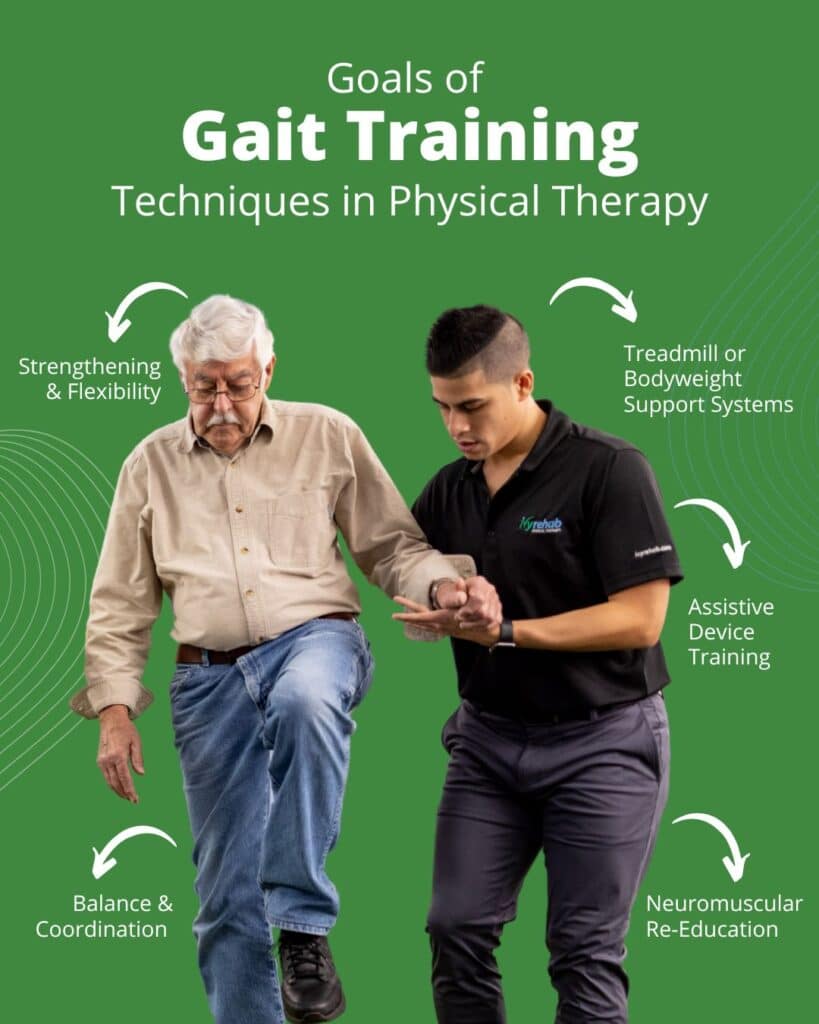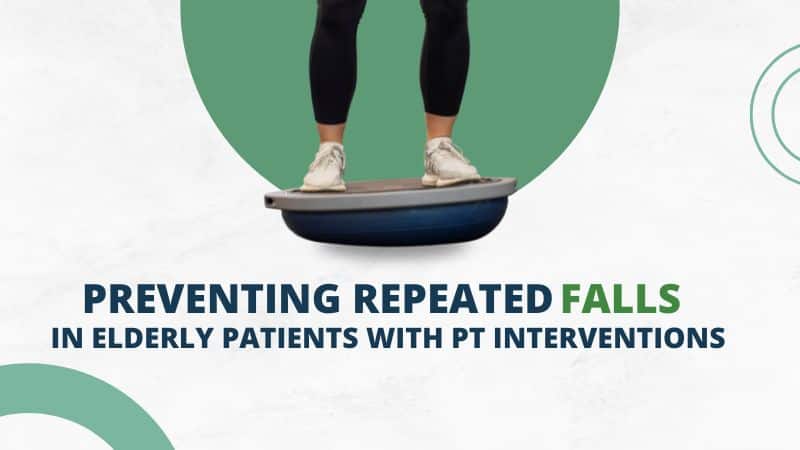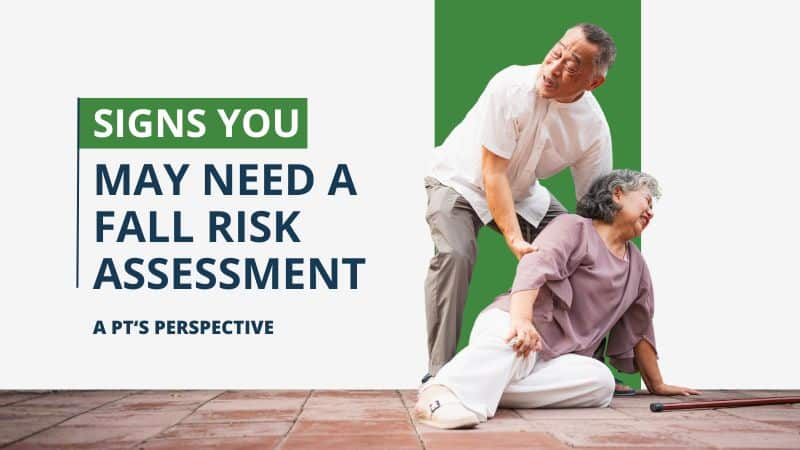Most of us don’t think twice about walking – until it starts to feel harder than it should. After surgery, an injury, or with conditions like Parkinson’s or multiple sclerosis (MS), even everyday movements can feel off-balance or unpredictable.
That’s where gait training physical therapy comes in. It’s a targeted physical therapy approach designed to retrain the way you walk, restoring rhythm, balance, and confidence. Through guided gait training exercises, this type of physical therapy can help improve your ability to walk safely and confidently. At Ivy Rehab, gait rehabilitation is never a one-size-fits-all plan. It’s personal, practical, and focused on helping you return to the activities that matter most.
What is Gait Training in Physical Therapy?
Gait training physical therapy focuses on the mechanics of walking. A therapist evaluates stride length, posture, balance, and how your body handles everyday movement challenges. From there, they design a program that may include exercises, coordination training, or specialized equipment.
Research shows that exercise-based programs, including gait training, can cut the risk of falls for older adults. A recent review found that training designed to challenge balance and improve walking patterns led to fewer falls and better confidence in daily movement. Another study on treadmill-based training showed it helped older adults lower their chances of falling again after an initial fall.
Who Can Benefit from Gait Training?
Gait training helps a wide range of people with walking or balance challenges, including:
- Stroke survivors relearning coordination
- People with Parkinson’s or MS managing shuffling or freezing
- Post-surgical patients recovering from hip, knee, or spine procedures
- Seniors with balance changes looking to prevent falls
- Athletes returning from lower-limb injuries
Robin Evans, PT, DPT, notes that gait problems often appear subtly: “Patients don’t always say ‘I’m falling.’ More often, they describe feeling slower, unsure, or noticing that their legs aren’t keeping up. That’s when gait training can make the biggest impact.”
This kind of therapy is especially effective for individuals who want to improve mobility and regain control over their stride, coordination, and feet positioning.
Goals of Gait Training PT
Every program has unique objectives, but the goals of PT gait training usually include:
- Improving posture and alignment
- Increasing walking speed and stride length
- Enhancing balance and stability on different surfaces
- Reducing the risk of falls
- Supporting independence in daily routines
These goals are measurable, allowing patients to see how gait training exercises help improve their ability to walk and overall mobility.
Gait Training Techniques in PT
Every step tells a story: how your body balances, shifts weight, and responds to the world around you. In gait training physical therapy, our therapists look closely at those details to help you move more naturally again. It’s not just about walking; it’s about walking with confidence.
Here are some of the most common methods used in gait rehabilitation at Ivy Rehab.

Strengthening & Flexibility Exercises
Strong hips, legs, and ankles are key for safe walking. Physical therapists use targeted exercises to build stability and range of motion, from bridges and heel raises to gentle stretches that improve stride length. These exercises improve foot placement, balance, and lower-body coordination.
Balance & Coordination Training
Many falls occur during everyday movements, such as turning too quickly, stepping down from a curb, or walking on uneven ground. Balance training helps retrain your body to handle those movements safely. Using controlled challenges, like shifting weight or walking on soft surfaces, therapists help patients respond automatically instead of hesitating.
These exercises help enhance reflexes and improve gait control, resulting in smoother, more confident walking.
Assistive Device Training
If a cane, walker, or crutch is needed, therapists ensure it’s used safely and correctly. The goal isn’t dependency; it’s confidence. Physical therapists teach how to adjust devices to fit properly, move efficiently, and transition away from them as strength improves.
Proper gait training exercises can help individuals improve their foot coordination and maintain the correct gait cycle while using assistive devices.
Treadmill or Body-Weight Support Systems
Treadmill and body-weight support systems give patients a safe way to practice walking without fear of falling. They’re especially helpful after surgery or stroke, when confidence and control are still returning.
Studies show that treadmill training – even with partial body-weight support – can help people walk faster and farther than standard rehab programs. At Ivy Rehab, therapists use this approach to rebuild rhythm and strength in a controlled setting before moving to real-world environments.
Neuromuscular Re-Education
Sometimes walking problems start in the nervous system, not the muscles. Neuromuscular re-education helps reconnect the brain and body after illness or injury. Through repetitive, guided movement, the nervous system learns new pathways, improving coordination, balance, and confidence with each step.
This rehabilitation physical therapy is effective for individuals with neurological diseases who need to improve mobility and retrain their gait cycle.
What to Expect in Gait Training at Ivy Rehab
At Ivy Rehab, gait training physical therapy starts with a detailed evaluation. A therapist assesses your strength, stride, balance, and confidence level while walking. Then they design a customized plan that grows with you.
You can expect:
- One-on-one sessions with a licensed PT
- Clear progress markers so you know how far you’ve come
- Education on safe walking strategies at home and in your community
Your therapy plan may include a combination of gait training exercises designed to enhance coordination and help improve your ability to walk safely and confidently.
Benefits of Gait Training Physical Therapy
The impact of gait rehabilitation is often life-changing. Benefits include:
- Safer, steadier walking
- Lower risk of falls
- Faster recovery after surgery or injury
- Greater independence in daily activities
The National Institute on Aging points out that mobility decline is one of the earliest signs of frailty, but also one of the most reversible with the right care. Regular gait training exercises and personalized therapy can help improve mobility and walking efficiency for individuals of all ages.
Why Choose Ivy Rehab for Gait Training
Our therapists specialize in gait rehabilitation, blending clinical expertise with personalized support. With guidance from leaders like Robin Evans and her team in aging therapies and vestibular rehab, Ivy offers programs that are evidence-based, compassionate, and designed around your goals.
Our approach focuses on exercises that help enhance movement, improve gait, and strengthen your feet for better control throughout the gait cycle. Each individual receives a customized plan tailored to their specific needs.
Conclusion
When walking starts to feel uncertain, it’s more than frustrating. It’s a sign your body needs support. Gait training physical therapy helps you find your rhythm again, building the strength and stability to move safely and confidently. At Ivy Rehab, we believe progress happens one step at a time, and we’ll take those steps with you.
Ready to take steadier steps again? Find an Ivy Rehab clinic near you to start gait training physical therapy with a team that’s here to help you move safely, confidently, and on your own terms.
References
- American Physical Therapy Association. (n.d.). ChoosePT: Physical therapy guide to gait and balance disorders. Retrieved October 7, 2025, from https://www.choosept.com
- Cochrane Database of Systematic Reviews. (2017). Treadmill training and body weight support for walking after stroke. Retrieved October 7, 2025, from https://pmc.ncbi.nlm.nih.gov/articles/PMC6483714/
- F1000Research. (2024). Perturbation-based treadmill training to prevent falls: A systematic review and meta-analysis. Retrieved October 7, 2025, from https://f1000research.com/articles/13-330
- National Institute on Aging. (n.d.). Falls and fractures in older adults: Causes and prevention. Retrieved October 7, 2025, from https://www.nia.nih.gov/health/falls-and-fractures-older-adults-causes-and-prevention
- National Institutes of Health. (2024). Mechanism-driven strategies for reducing fall risk. Frontiers in Aging. Retrieved October 7, 2025, from https://pmc.ncbi.nlm.nih.gov/articles/PMC11641686/

Advanced Treatment Options Tailored to Yo
Our specialized programs are designed to address unique health challenges.








